It seems that since I´ve mastered my first 1.000 miles aboard a catamaran during the two Excess-deliveries last year (read it here and here) I kind of became a fan of multihulled boats. Not that I would skip a monohull in favor of two hulls, but I can clearly see the huge advantages a cat has over a mono and that for some circumstances the multihull is absolutely the boat of choice. Last week The Excess brand launched their lates catamaran, not the 13 like I´ve speculated but a fairly big 44 footer, Excess 14. This alone is not a big deal, but the new boat bears one feature I found particularly interesting: Asymmetric hulls!
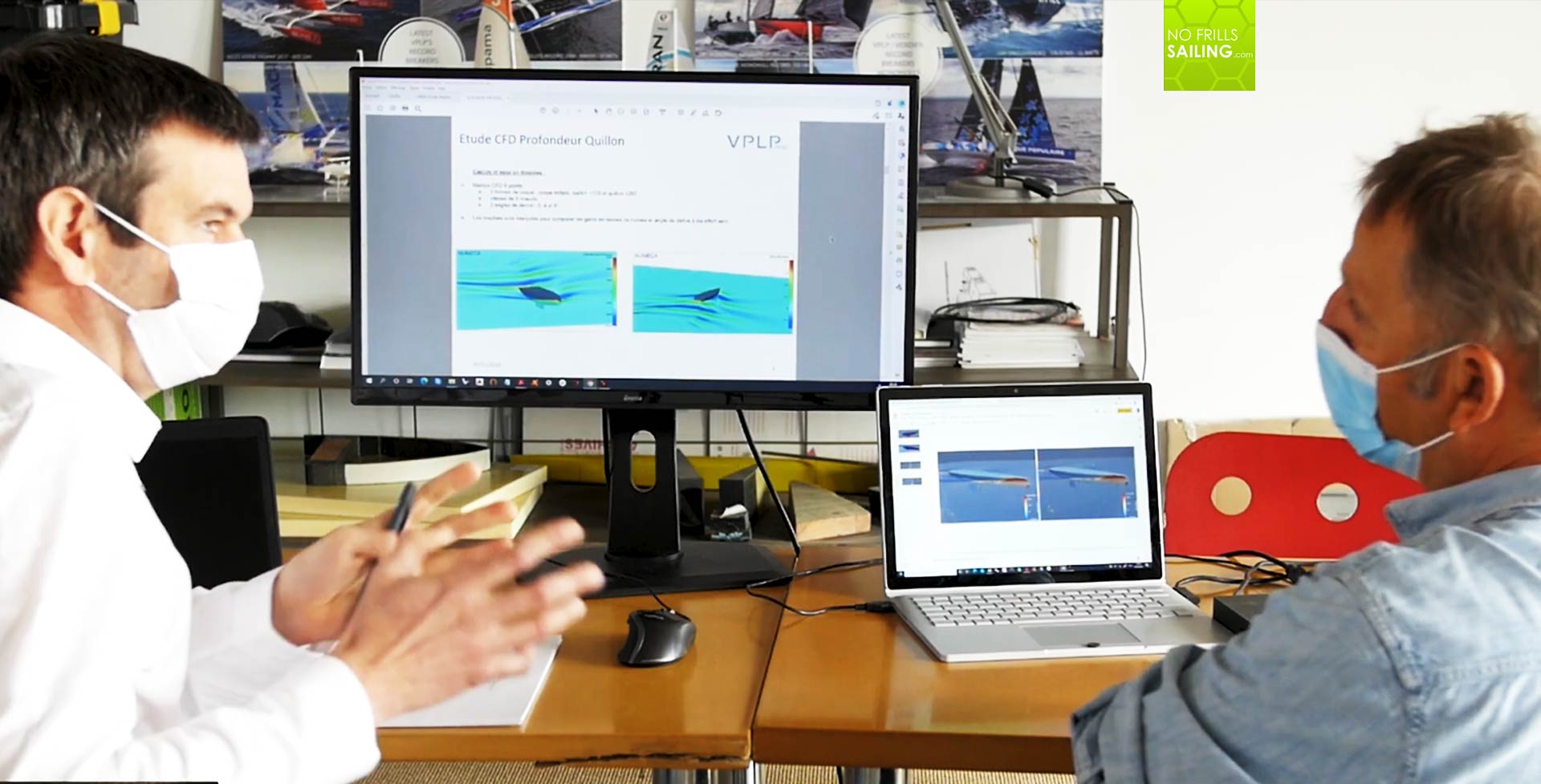
Since I am very interested in naval architecture and stories from this part of the business, I immediately called Hervé Piveteau, the “Catamaran Guru” who works for the yard, and persuaded him for another interview on this topic. I am glad and flattered he agreed and here´s what we´ve been talking about…
Hervé Piveteau on conceiving the new Excess 14 with VPLP
Lars Reisberg | NO FRILLS SAILING.com: “Hervé, first of all, congratulations to the Excess 14! How long did the team work on conceiving this brand new boat?”
Hervé Piveteau: “Hi there, Lars. Thanks, we are all excited too! Well, the overall project started approximately eighteen months ago. But interestingly enough, but most of the teamwork and detailed design occurred during calendar year 2021, which is a pretty fast process, I´d say.”
NO FRILLS SAILING.com: “I´ve noticed that the yard undertook a load of extra-efforts for the Excess 14. Why this much? Why going through this sort of trouble of developing a catamaran from scratch, I mean, in the end Excess was and is a “normal” production boat?”
Hervé Piveteau: “Well, we did not see this as trouble but rather as an opportunity. The opportunity to create a boat – as you said – literally from scratch. Within our new, young and open-minded brand it seemed logical. This needed efforts indeed, but they are not that many occasions to investigate, innovate, create. We are a passionate team: We saw this whole process was as a real chance, not an extra effort. Yes, Excess is a production brand, but the hydro-solutions we have found using high-end CFD software hardly affect the manufacturing process or the cost of the boat. So, why do “as usual” if we can offer something superior at a similar cost?”
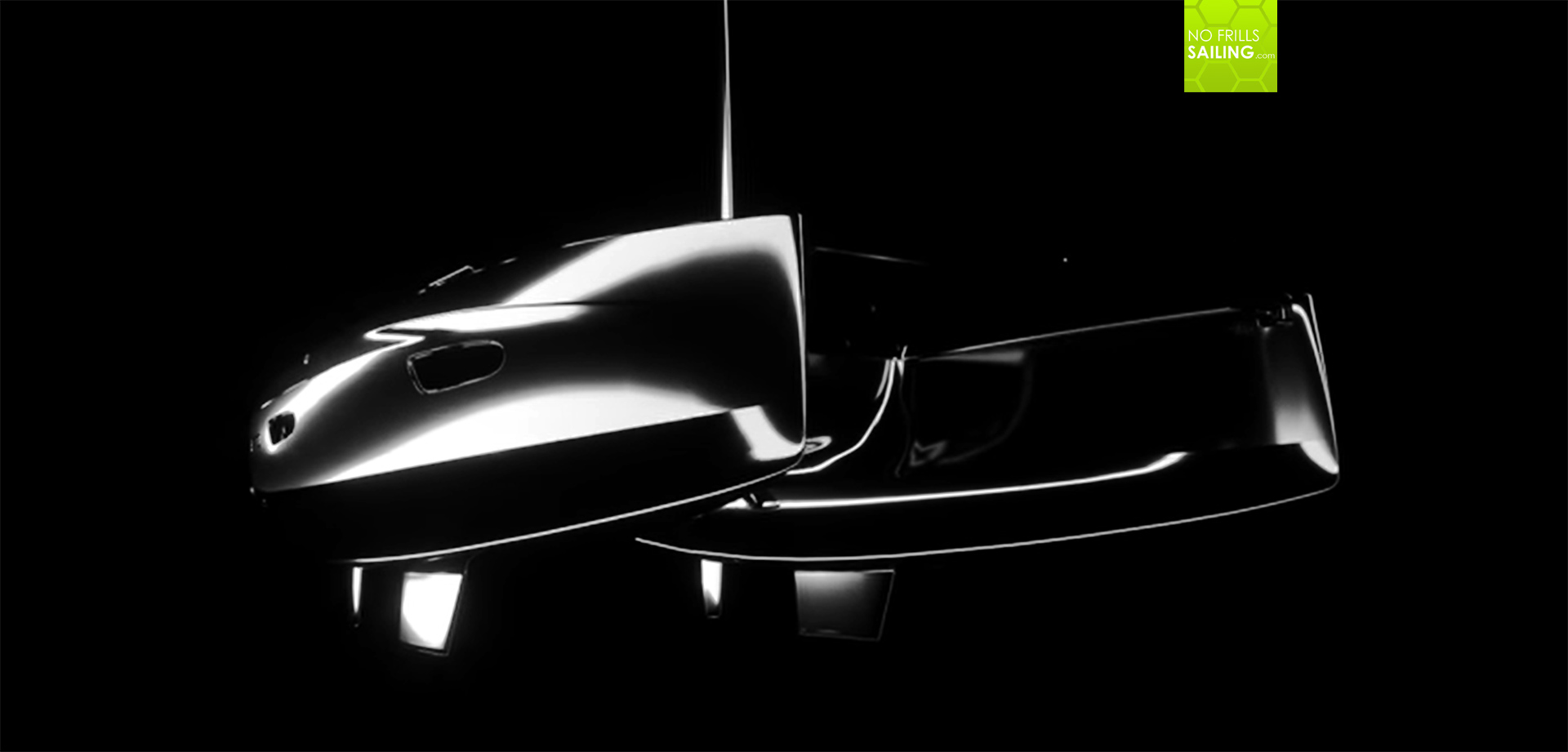
NO FRILLS SAILING.com: “The one detail I am very much interested in are the asymmetrical hulls. First of all, what is the idea behind having hulls with a not-mirror-inverted hull-cross section?”
Hervé Piveteau: “Well, let´s maybe take one step back. The whole mindset of our team was to really think out of the box. To really try to go unusual ways. So the question was not “why going asymmetrical” but rather the other way round: “Why should it absolutely be symmetrical?” Our partners at VPLP had the feeling that asymmetry could reduce the drag and so we decided to further investigate this idea. That was the beginning of this story.”
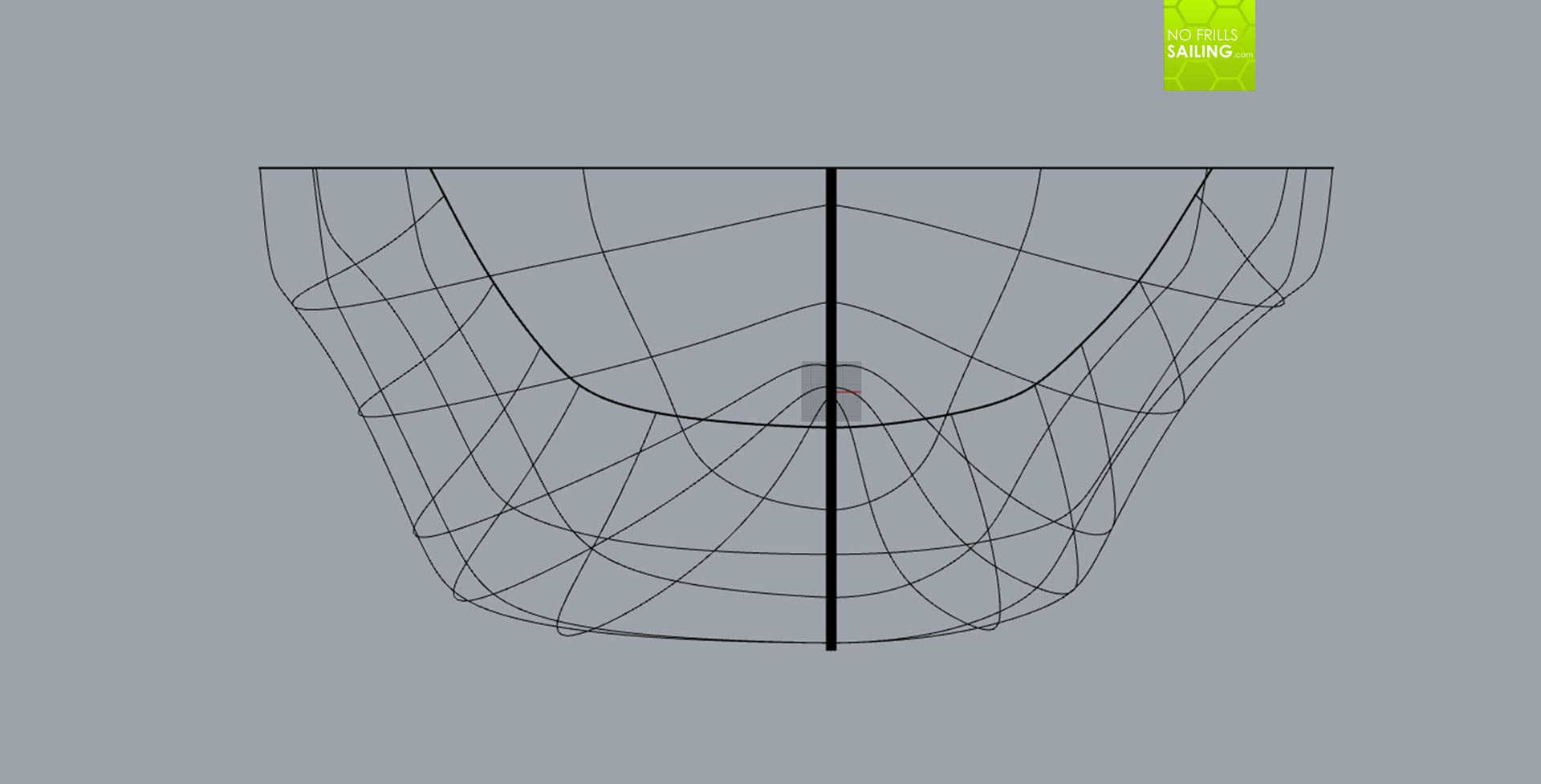
NO FRILLS SAILING.com: “In understand. So, compared to a completely mirror-inverted cross section, what is the gain of an asymmetrical hull?”
Hervé Piveteau: “First of all, this choice had no impact at all on the global volume and longitudinal center of buoyancy of our new boat. Also, the wetted surface is very similar. But … the major gain is on the interference drag, we can talk about this later a little bit more in detail. Also, an additional gain is on the, let´s call it “power”, of the boat. Asymmetry lifts the center of buoyancy to the outboard-side of each hull. In this, the boat artificially gains some extra width, hence extra righting moment.”
NO FRILLS SAILING.com: “Let´s talk about drag some more. You mentioned that the concept of having the asymmetrical hulls reduces drag – how is this achieved?”
Hervé Piveteau: “Maybe during your own trips on the Excess 11 you have looked between the two hulls underneath the salon. Have you seen the waves created by the hulls? Well, on a catamaran we see, on top of viscous and pressure drags, an additional drag being created exactly there. It is done by the two hulls’ waves interfering in the middle, below the platform. These interfering waves create drag, slowing down the boat. Now, by making the hulls asymmetric we achieved that the inner waves had been reduced and as such this interference isn´t that strong anymore.”
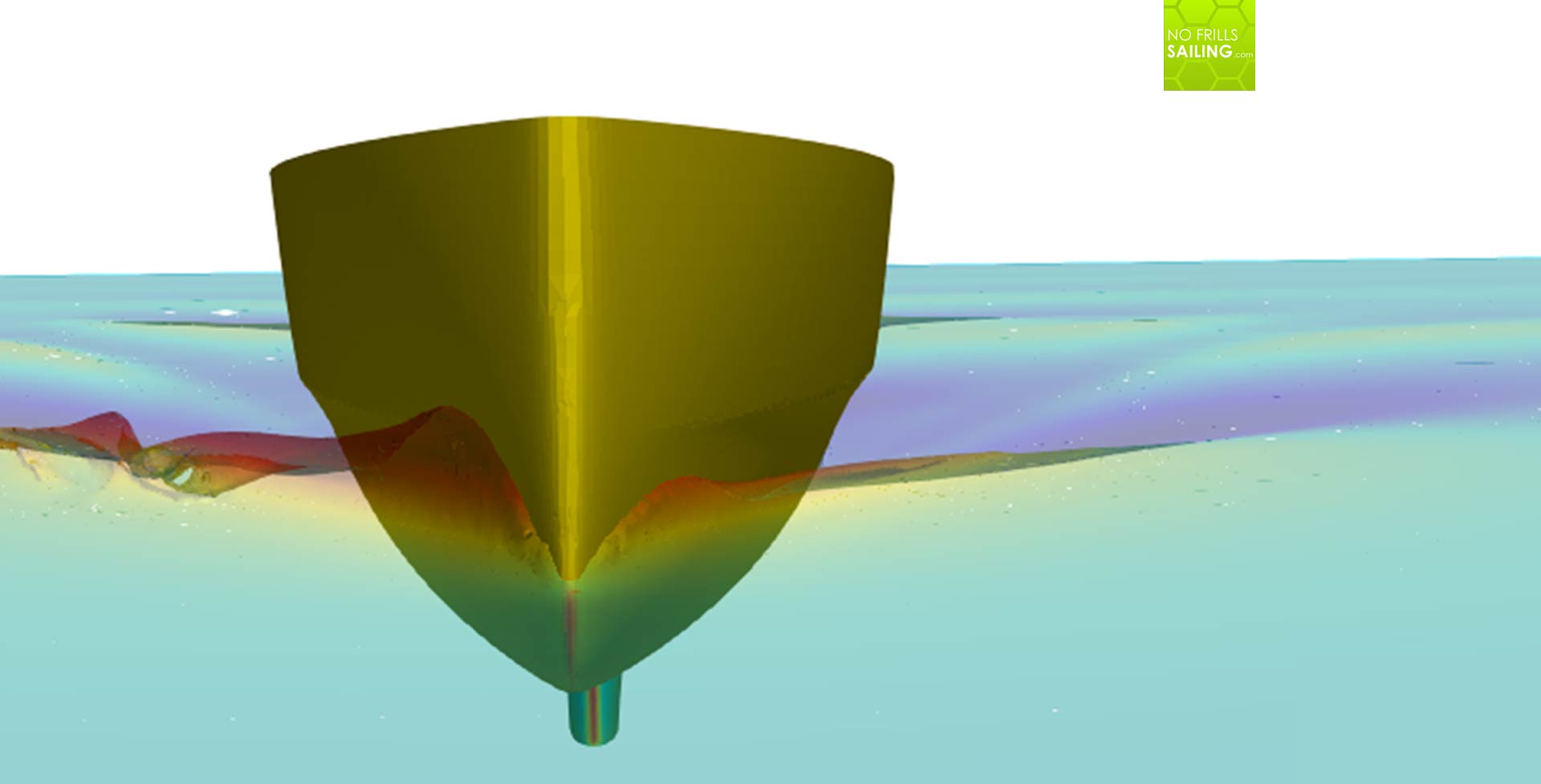
NO FRILLS SAILING.com: “It seems that the Excess 14 has a lot bigger or at least deeper fins than, for example, the Excess 11. Can you explain the iterations and variants tested on this new hull before the naval architects settled with this configuration?”
Hervé Piveteau: “At first, during the “white sheet of paper”-phase, we started with the idea of lifting daggerboards. We quickly discarded this concept because they had a huge impact of the cruising-aspect and comforts of the boat. Daggerboards imply more maneuvering, deeper draft while sailing, more things to trim, more things that can break, risks of leaks, less living space et cetera. So, still thinking out of the box, we said “Okay: Why not trying to get efficient fixed fins then instead?” Iterations of these newly designed fins were mainly made on their draft, chord length and thickness. In this, we searched for having the best compromise between hydro gain, technical and structural feasibility, and shallow areas access. We did gain a lot with the first centimeters we added and going further showed less gain. In the end, a 1.48 meters draft is the compromise we felt ideal on a boat this size.”
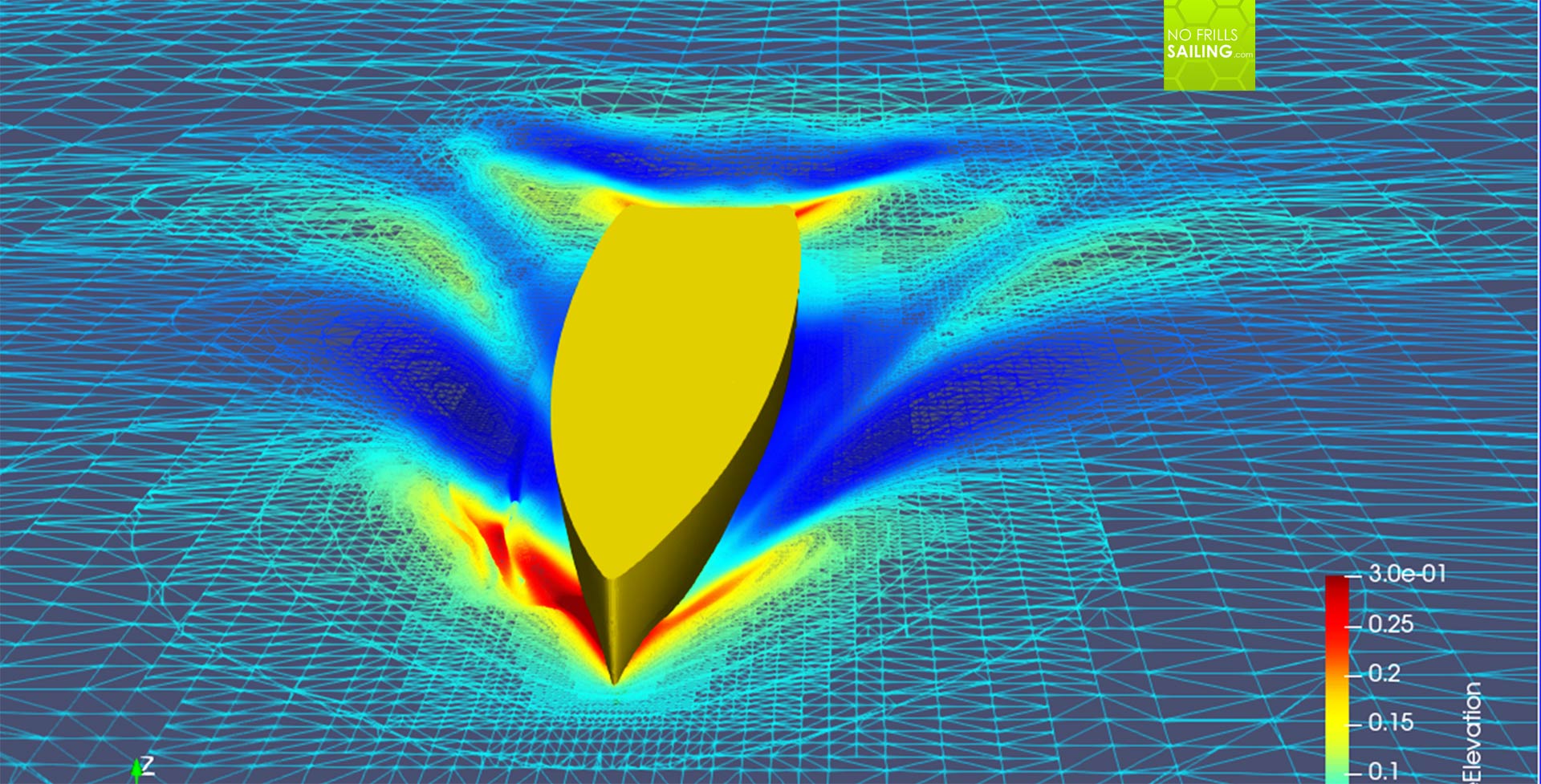
NO FRILLS SAILING.com: “Another interesting detail on the new 14 is the use of inverted bows, negative stems: What are the advantages of having this bow shape on a multihull?”
Hervé Piveteau: “Excess cats are about sailing fun. So, our main objective was to improve the sensitivity on the helm. Deep immersed bows can be seen as a kind of “forward fins”. They do put the boat on tracks but also reduce maneuverability. Another advantage has appeared in the higher speed ranges: By lifting the bow and immersing the transom, the longitudinal center of buoyancy has moved aft, and this has reduced the hulls drag while sailing above 5 knots, which is another nice effect.”

NO FRILLS SAILING.com: “Is it suffice to say that the Excess 14 is the most powerful production catamaran on the market? Which target group in terms of buyers are attracted by the concept of this cat?”
Hervé Piveteau: “I do not know if this is the most powerful production cat, I really don´t know. For sure, it will have a very good sail area/displacement ratio and – more importantly – we expect it to be a boat that gives real sailing sensations, a boat that is fun to sail yet easy to handle. Our targeted clients are people coming from the monohulls, seeking more comfort without losing the pleasure and sensations of sailing. This can be either private owners or people renting the Excess 14 in a charter fleet. You really should try it out, Lars!”
I absolutely will do, Hervé! Thanks for sharing your thoughts on this topic again and sparing some of your precious time! Very much appreciated.
Articles you may like to read as well:
First time on a catamaran
Biscay trap in a multihull: The Race of Alcerney
How to escape a capsized catamaran
